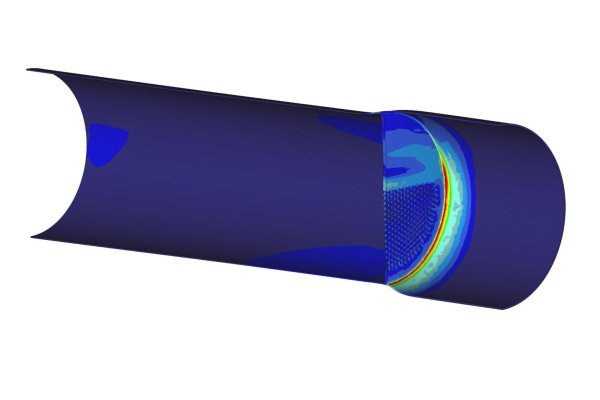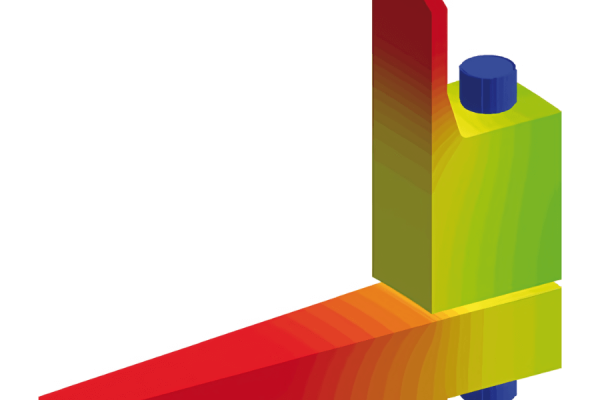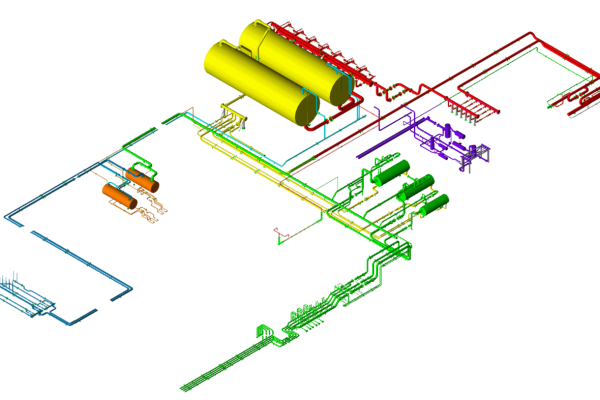Introduction
This case study recounts the stress analysis conducted for the design of two structural platforms attached to reinforcement rings on a vacuum tower. These platforms were installed at two different elevations: the upper platform encircled the entire circumference of the tower, while the lower platform consisted of two sections positioned on opposite sides of the tower.
Analysis
A significant challenge in the design process was the diminished strength of the vacuum tower due to corrosion in some of its plates. The corroded wall thicknesses were measured, and the resulting structural integrity was evaluated.
The Finite Element Method (FEM) was employed to model the connection between the platforms and the vacuum tower in detail, utilizing the commercial software package Pro/Mechanica. This analysis assessed the various stresses acting on the vacuum tower and the platforms under different design and operating conditions.
Particular attention was given to the vacuum rings and supporting bolts. Given the low number of thermal cycles experienced, the primary concern was the sustained loads rather than cyclic loads. Consequently, the analysis focused on primary (sustained) stresses for both the vacuum rings and the bolts.
Results
Under the most conservative conditions—considering the design temperature and maximum corrosion—the sustained stresses at the most critical location (the vessel wall above the upper vacuum ring) approached the allowable stress limits. It was also determined that self-limiting stresses caused by temperature gradients were negligible. Over a 30-year period, the number of full thermal cycles was estimated to be around 10, indicating that fatigue damage from thermal loads was not a significant concern.
Finally, even under the most conservative conditions, which included a safety factor of 2 on loads, the bolt connections were adequately designed to withstand sustained






